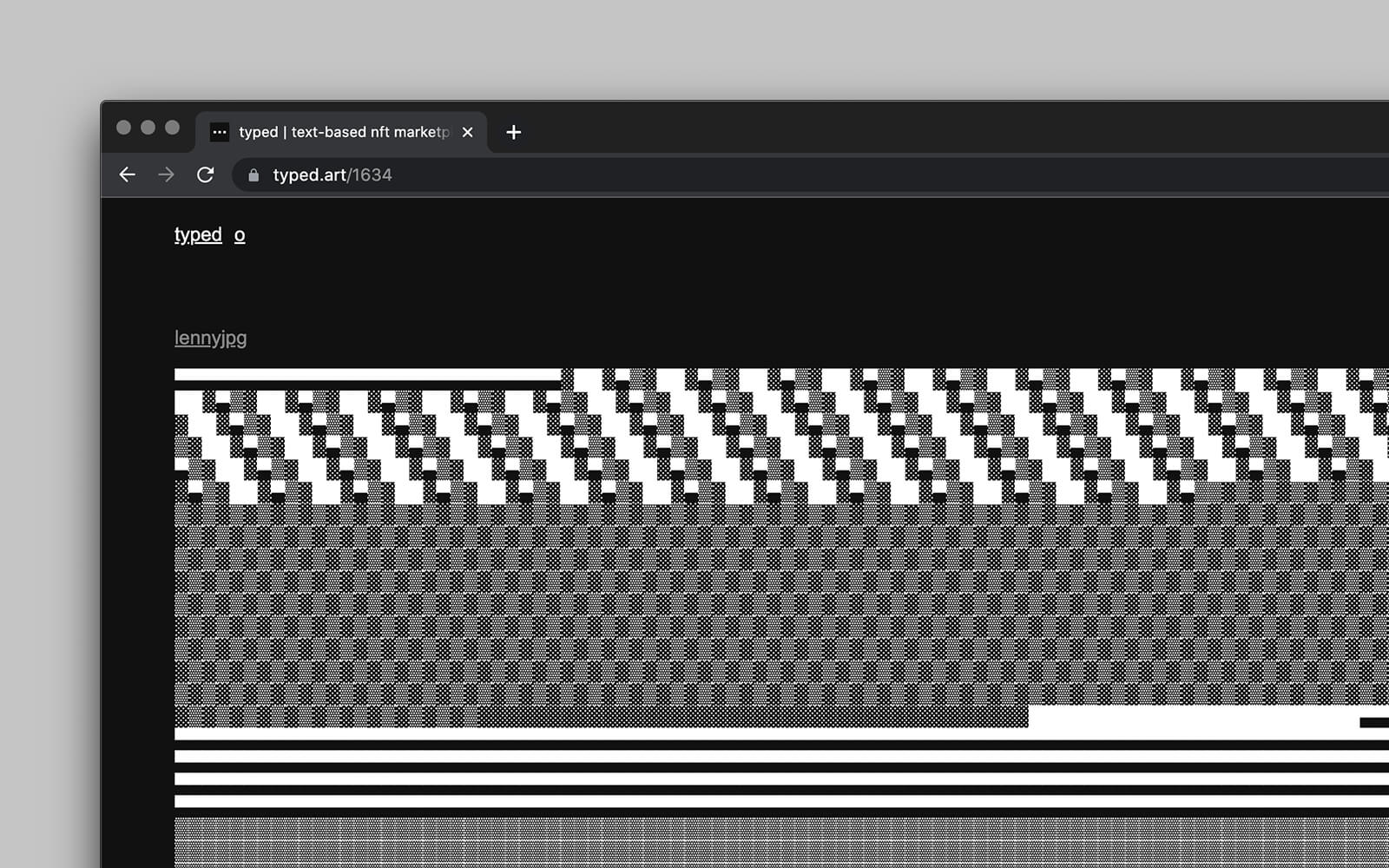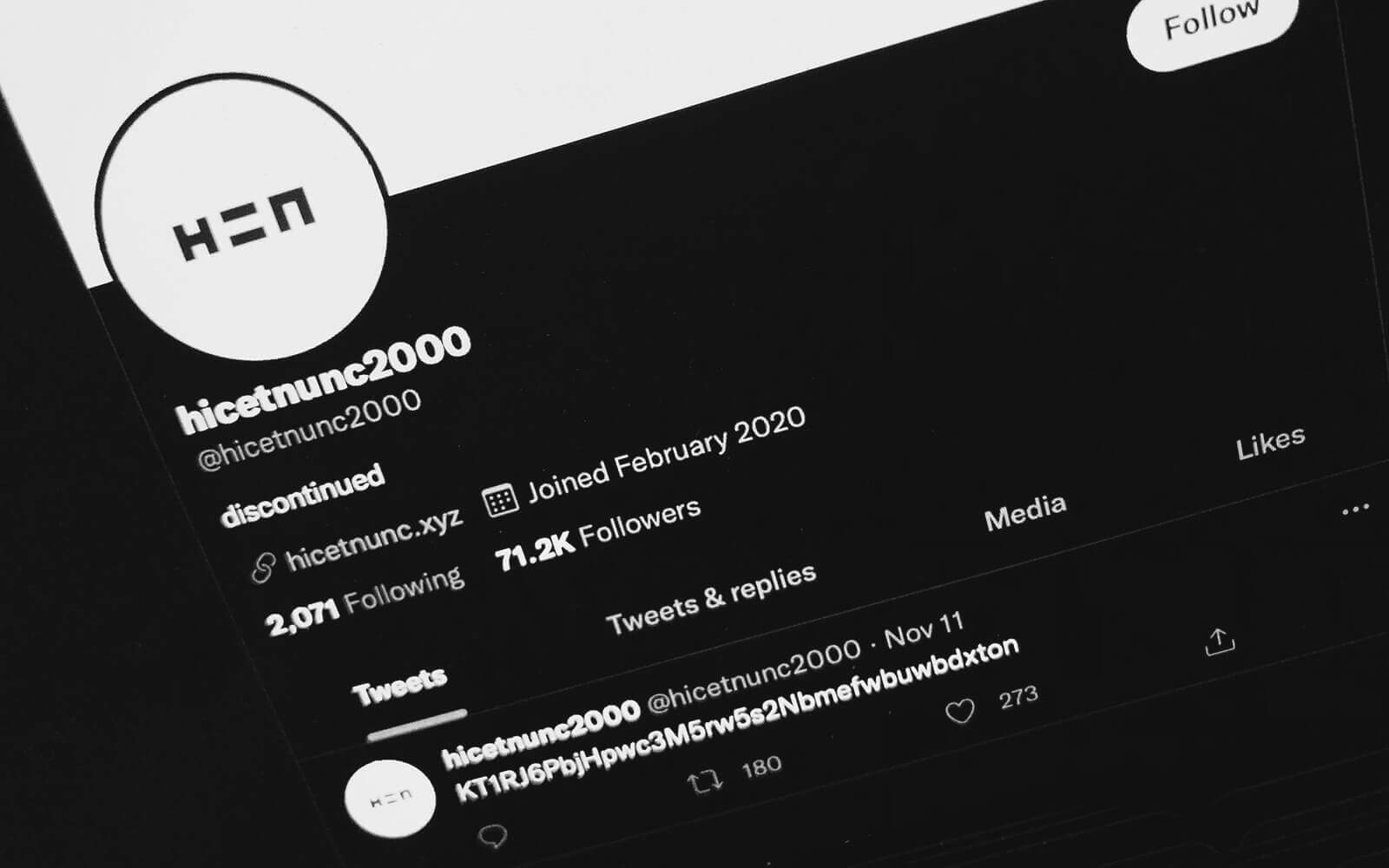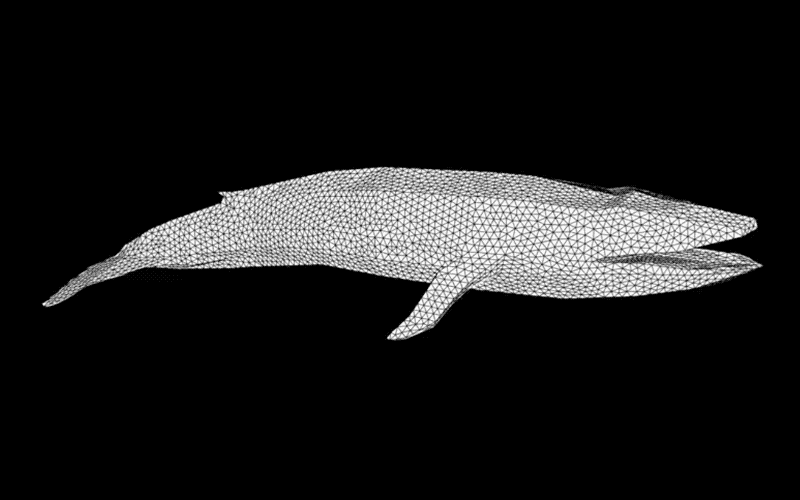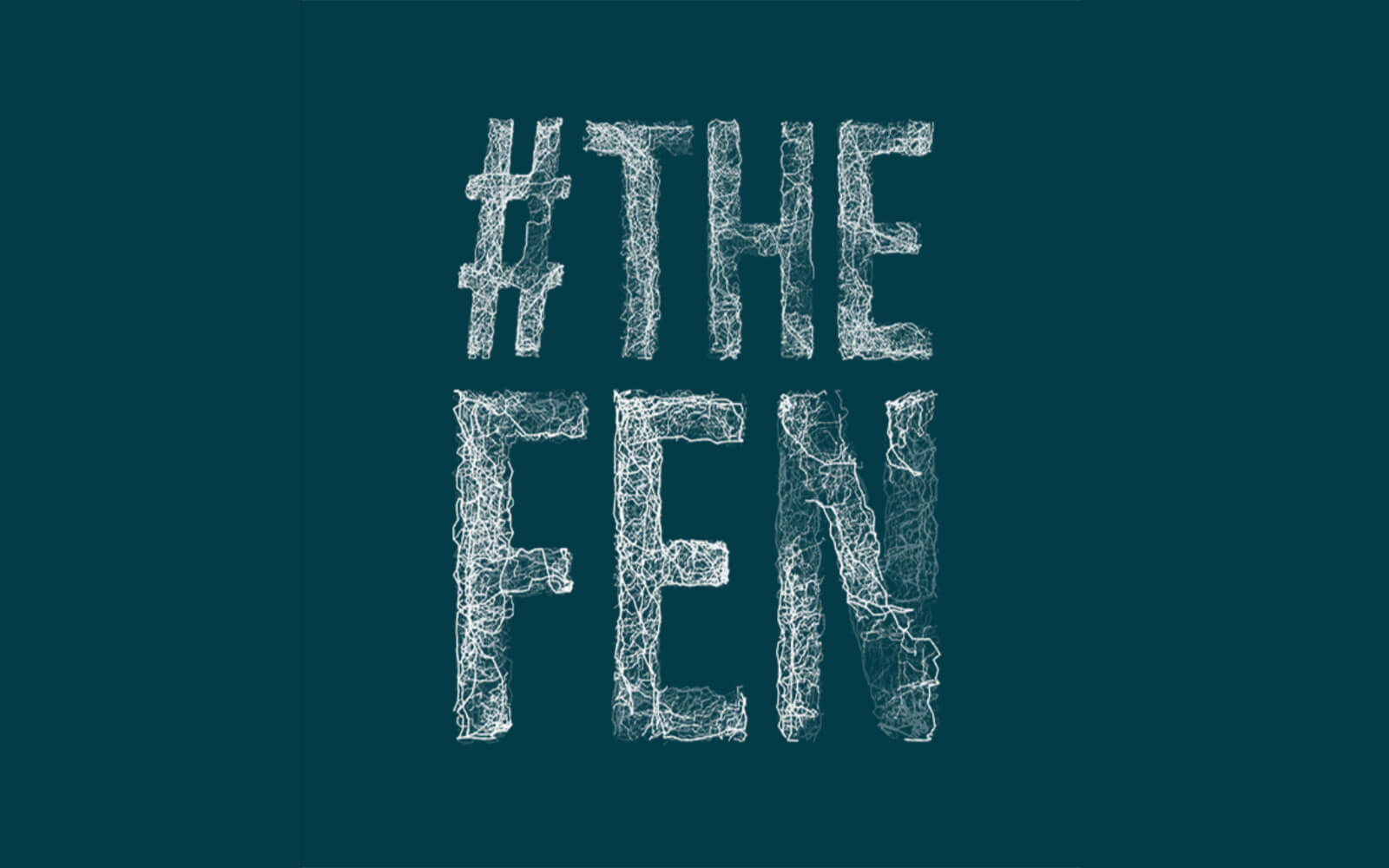1,576 days, 2,409 entries ...
Newsticker, link list, time machine: HOLO.mg/stream logs emerging trajectories in art, science, technology, and culture––every day
Much to the delight of writers, concrete poets, and ASCII artists, creative coders Play and EREN launch Typed, a text-based NFT market place on the Tezos chain. Featuring a spartan interface reminiscent of the Hic et Nunc glory days, Typed allows minting of bare-bones text entries, inviting all kinds of character-based experimentation. Within hours of being announced on Twitter, the platform was bustling with activity (image: Leander Herzog’s adaption of his generative art hit Agglo).

Hic et Nunc (HEN) founder Rafael Lima pulls the plug on the popular ‘indie’ NFT marketplace, following what some allege were heated discussions on the community’s Discord channel. First, the website disappeared, then the market’s smart contract was posted to the official Twitter page. Launched in March on the low-cost, low-carbon Tezos chain, HEN became an instant artist favourite (esp. in the Global South) and just recently celebrated 500,000 minted NFTs.

“Someone wrote the worst crypto-bot and I’m taking advantage of it. Am I a bad person?”

“My idealistic read of Hic et Nunc peaked during the platform’s first hackathon in May, when 150 artists and developers came together to work towards improving the platform. On June 28th, the momentum came to a halt.”
“As much as we celebrate digital art and its democratization—where’s the acknowledgement from the NFT crowd of the thousands of people who develop the tools used to make the hot-selling works NFT platforms are being flooded with?”
An effort to encourage NFT artists and collectors to transition to greener blockchains, curator Juliette Bibasse and visual artist Joanie Lemercier kick off a series of coordinated cryptoart releases on Hic et Nunc, an indie marketplace on the energy-efficient Tezos chain. Named “The FEN” (image: generative type by Mike Brondbjerg), the campaign launches with pieces by Dave Whyte, Zai Divecha, and Auriea Harvey. Drops from more than 30 other artists will follow in the coming weeks.

“Using steganography, I have hidden the whole essay inside the JPEG. Yes, you’re looking at a conceptual artwork that is currently explaining itself to you.”
Daily discoveries at the nexus of art, science, technology, and culture: Get full access by becoming a HOLO Reader!
- Perspective: research, long-form analysis, and critical commentary
- Encounters: in-depth artist profiles and studio visits of pioneers and key innovators
- Stream: a timeline and news archive with 1,200+ entries and counting
- Edition: HOLO’s annual collector’s edition that captures the calendar year in print
